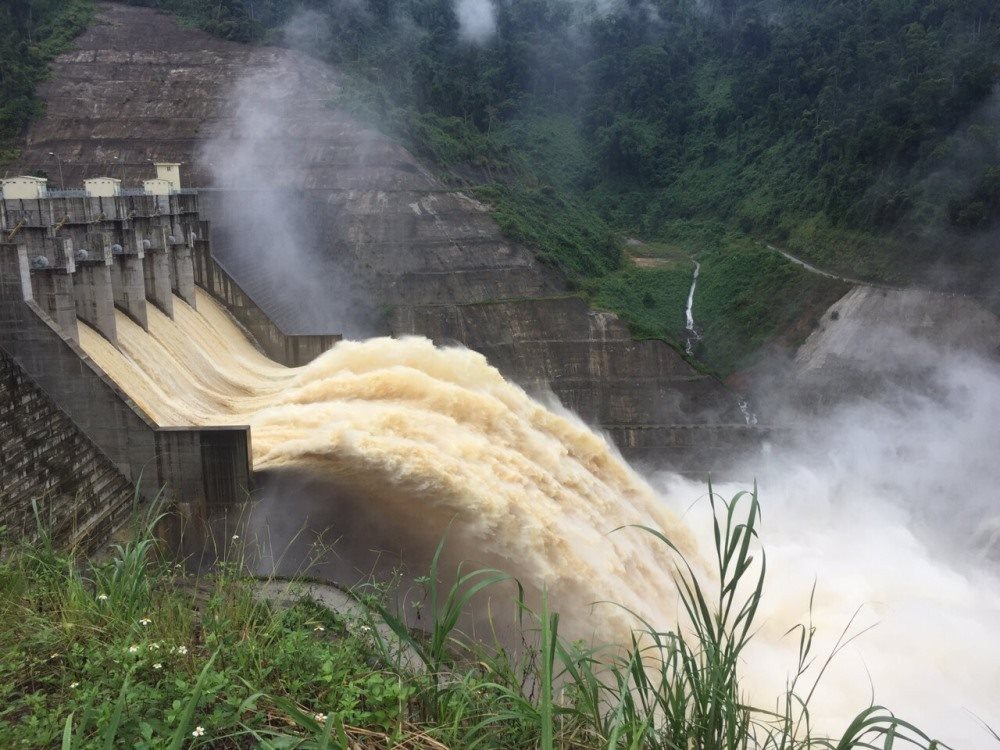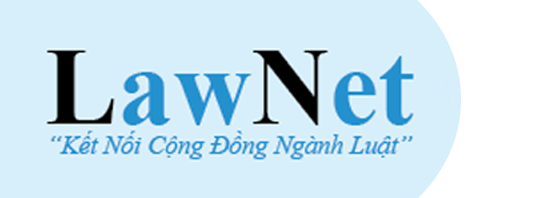Guidance on taxable extraction quantity in Vietnam
What are the regulations on calculating taxable extraction quantity in Vietnam? - Hoang Linh (Tien Giang)

Guidance on taxable extraction quantity in Vietnam (Internet image)
Regarding this issue, LawNet would like to answer as follows:
1. Guidance on taxable extraction quantity in Vietnam
Guidance on taxable natural resource output according to Article 5 of Circular 152/2015/TT-BTC is as follows:
- If the quantity or weight of natural resources extracted is determinable, taxable extraction quantity is the actual quantity or weight of natural resources extracted in the tax period.
If the natural resource-derived products obtained are of different classes, quality, and commercial value, taxable extraction quantity is determined according to the extraction quantity of each resource having the same class, quality, and commercial value, or their quantities will be converted to the resource having the highest sales in order to determine the taxable extraction quantity of all natural resources in the period.
Example 1: Enterprise A extract stones after blasting. The stones extracted are of various sizes. They will be sorted by class and quality to determine taxable extraction quantity of each type. In case enterprise A sells part of the stones and grind the remainders into smaller stones of different sizes, taxable extraction quantity is calculated by converting the quantities of stones of different sizes to the one having the highest sales. Enterprise A shall declare and pay tax on the quantity of stones extracted according to the selling price.
- If the quantity or weight of natural resources is not determinable because they contain various substances or impurities, and natural resources are sold after screening and classification, taxable extraction quantity is calculated as follows:
+ If the substances can be separated, the taxable extraction quantity is determined according to the quantity, weight of the natural resources or each substance obtained after screening and classification.
In case earth, stones, wastes, dregs collected after screening are sold, severance tax on the quantity of natural resources in the wastes, dregs sold shall be paid at corresponding severance tax rates.
Example 2: in case coal extracted from the mine contains impurities, earth, stones, and has to be screened and classified before being sold, the taxable extraction quantity is the quantity of coal that has been screened and classified. In case the wastes sold contains coal and other natural resources, severance tax shall be charged upon taxable natural resources in the wastes at actual selling price and corresponding tax rates.
Example 3: After extracted iron ore is screened, they collected 2 kg of gold nuggets and 100 tonnes of iron ore. Severance tax shall be charged on the quantity of gold nuggets and iron ore obtained. Quantities of other natural resources serving the process of mineral extraction, such as water for screening, will also be determined to calculate tax.
+ If the ore extracted contain various substances (polymetallic ore) and the quantity of each substance cannot be determined after screening and classification, the taxable extraction quantity of each substance depends on the actual quantity of extracted ore and ratio of each substance in the ore.
The ratio of each substance in the ore is determined according to the ore sample inspected and approved by competent authorities. In case the ratio of each substance in the ore is different than the ore sample, the taxable extraction quantity will depend on the analysis result given by a competent authority.
Example 4: Enterprise B extracts 1000 tonnes of ore in the month which contains various substances. According to the mining license and substance ratio in the ore sample approved by National Reserve Evaluation Council: copper ore: 60%; silver ore: 0.2%; tin ore: 0.5%.
Taxable quantity of each substance:
++ Copper ore: 1,000 tones x 60% + 600 tonnes.
++ Silver ore: 1,000 tones x 0.2% + 2 tonnes.
++ Tin ore: 1,000 tones x 0.5% + 5 tonnes.
Severance tax shall be calculated according to the unit price and quantity of each substance in the ore.
- If extracted natural resources are used for further manufacturing and processing instead of being sold, taxable extraction quantity is calculated as follows:
If extracted natural resources are used for further manufacturing and processing instead of being sold, taxable extraction quantity is determined according to quantity of products manufactured in the period and amount of natural resources in a unit of products.
Amount of natural resources in a unit shall be declared by the taxpayer according to the project approved by a competent authority and applied technologies. To be specific:
+ If the products sold are natural resource-derived products, the amount of natural resources in a unit of natural resource-derived products product shall apply.
+ If the products sold are industrial, the amount of natural resources in a unit of industrial products shall apply.
Whether products sold after processing are industrial products or not shall be decided by relevant Ministries.
Example 5: Enterprise A grinds part of the stones for manufacturing of cement for sale. If the quantity of stones used for manufacturing of cement cannot be determined, it will be converted from the production of cement from extracted stones. In this case, enterprise A shall determine its own norms and technical process.
Example 6: Enterprise C extracts 10 tonnes of apatite which consists of 2 tonnes of apatite 1, 3 tonnes of apatite 2, and 5 tonnes of apatite 3. Apatite 1 and apatite 2 are sold, and apatite 3 are used for processing into apatite 1 for sale. Taxable extraction quantity:
++ 5 tonnes of apatite 1 and apatite 2;
++ Extraction quantity of apatite 1 obtained from the processing of apatite 3.
Example 7: Part of the polymetallic ore extracted by enterprise D is sold as is in Vietnam. The remainder is refined for export. Taxable extraction quantity is calculated as follows:
++ Taxable extraction quantity of each substance in the ore being sold in Vietnam is calculated according to on the ratio of each substance in the polymetallic ore approved by National Reserve Evaluation Council and the analyzed ore sample.
++ Export quantity: If refined natural resources for export are identified as industrial products by a competent authority, taxable extraction quantity of natural resources is determined according to the ratio of each substance in the polymetallic ore approved by National Reserve Evaluation Council, the analyzed ore sample, and amount of natural resources in a unit of products declared by enterprise D according to its technology process.
- With regard to natural water used for hydropower generation, taxable extraction quantity of natural resources is the amount of electricity sold by the generating facility to the buyer under a electricity sale contract (or transmitted electricity if there is not electricity sale contract) according to a measurement system that meet Vietnam’s measurement standards.
This amount must be confirmed by the buyer and the seller.
- For natural mineral water, natural hot water, bottled/boxed purified natural water, natural water used for production/business, taxable extraction quantity of natural resources shall be expressed as cubic meter (m3) or liter (l) according to the measurement system that meet Vietnam’s quality measurement standards.
The taxpayer must install meters for monitoring extraction quantity of natural mineral water, natural hot water, and natural water extracted as the basis for tax calculation. The installed meters must have certificates of inspection by Vietnam’s quality measurement standard authorities. A notification of installed meters must be enclosed with the next declaration of severance tax.
If the meters cannot be installed because of objective reasons and thus taxable manufacture cannot be determined, a flat extraction quantity shall be imposed. The tax authority shall cooperate with relevant agencies in determining flat extraction quantity to calculate severance tax in accordance with this Circular.
- Mechanism for cooperation between tax authorities, resources and environment authorities in management of local resource extraction:
According to taxpayers’ declarations of actual extraction quantity in the year at each mine in the statement submitted together with the annual declaration of severance tax at the end of the fiscal year, within 05 working days, the tax authority shall send information about actual extraction quantity in the year at each mine to the resources and environment authority.
The resources and environment authority shall compare the extraction quantity at each mine declared by taxpayers with its data. If they are not consistent or violations are suspected, the resources and environment authority shall take actions to determine the actual extraction quantity.
Within 07 working days from the receipt of information sent by the tax authority, the resources and environment authority shall send information to the tax authority for processing as prescribed by the Law on Tax administration.
- If there are local enterprises that extract, export natural resource-derived products, the tax authority shall determine the actual quantity of exported natural resource-derived products under the mechanism for information exchange in Decision No. QD/BTC dated March 30, 2015 of the Ministry of Finance to calculate the quantity of natural resource-derived products and compare with the extraction quantity on the annual declarations of severance tax submitted by the enterprises.
If the taxable extraction quantity declared by the enterprise is inconsistent, the tax authority shall carry out inspection as prescribed by the Law on Tax administration to collect severance tax arrears and impose penalties as prescribed.
Undeclared extraction quantity shall incur severance tax at the rate and taxable price applicable at the time of extraction; If the time of extraction cannot be determined, the tax rate and taxable price prescribed by law at the end of the year in which natural resources are extracted shall apply.
2. Guidance on tax rates on natural mineral water in Vietnam
According to Clause 2, Article 7 of Circular 152/2015/TT-BTC, tax rates on natural mineral water, natural hot water, bottled/boxed purified natural water, extracted natural water in some cases:
- Natural mineral water, natural hot water, bottled purified natural water (including natural water in big bottles or tanks that can be divided into smaller bottles/boxes) apply the same rate of severance tax;
- Natural water used for hydroelectricity generation, business/production that contains natural mineral water or natural hot water that, according to documents about design and technological process of production/service provision, have been determined by competent authorities as not used for producing/selling natural mineral water, natural hot water, bottled/boxed purified natural water, corresponding rates of severance tax shall apply according to their uses.
- Key word:
- taxable extraction quantity
- in Vietnam
- Cases of land rent exemption and reduction under the latest regulations in Vietnam
- Economic infrastructure and social infrastructure system in Thu Duc City, Ho Chi Minh City
- Regulations on ordination with foreign elements in religious organizations in Vietnam
- Increase land compensation prices in Vietnam from January 1, 2026
- Determination of land compensation levels for damage during land requisition process in Vietnam
- Who is permitted to purchase social housing according to latest regulations in Vietnam?
-

- Emergency response and search and rescue organizations ...
- 10:29, 11/09/2024
-

- Handling of the acceptance results of ministerial ...
- 09:30, 11/09/2024
-

- Guidance on unexploded ordnance investigation ...
- 18:30, 09/09/2024
-

- Sources of the National database on construction ...
- 16:37, 09/09/2024
-

- General regulations on the implementation of administrative ...
- 11:30, 09/09/2024
-

- Notable new policies of Vietnam effective as of ...
- 16:26, 11/04/2025
-
.Medium.png)
- Notable documents of Vietnam in the previous week ...
- 16:21, 11/04/2025
-
.Medium.png)
- Notable documents of Vietnam in the previous week ...
- 16:11, 02/04/2025
-
.Medium.png)
- Notable new policies of Vietnam to be effective ...
- 16:04, 02/04/2025
-
.Medium.png)
- Notable new policies of Vietnam effective from ...
- 14:51, 21/03/2025

 Article table of contents
Article table of contents
